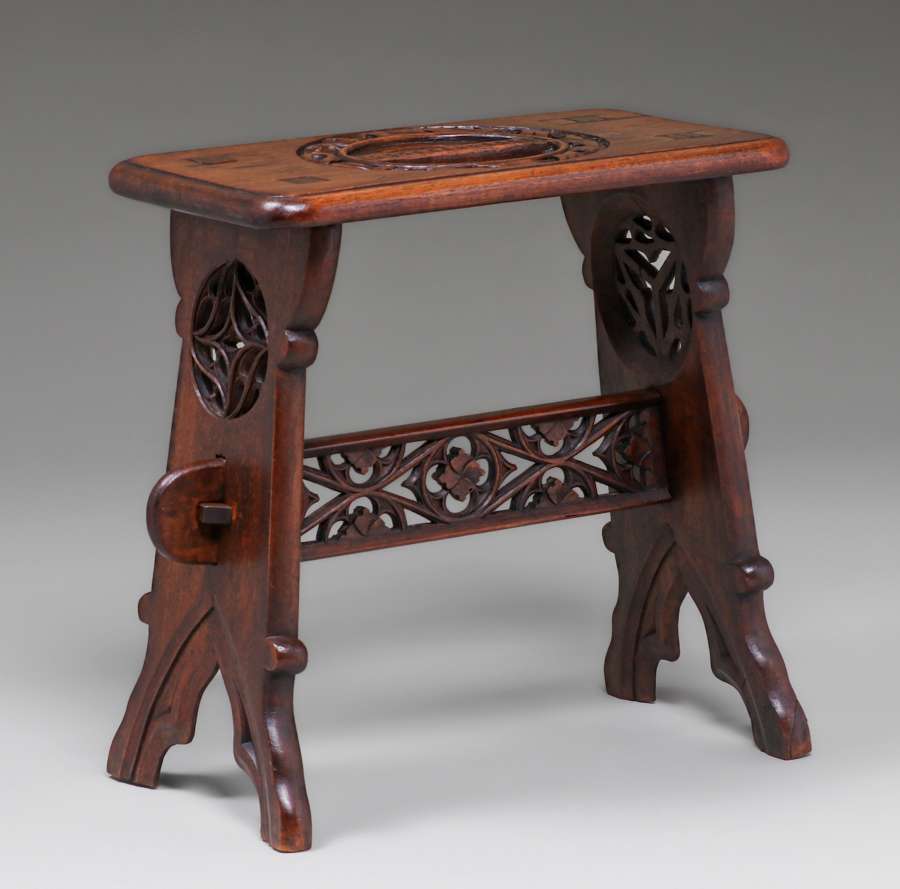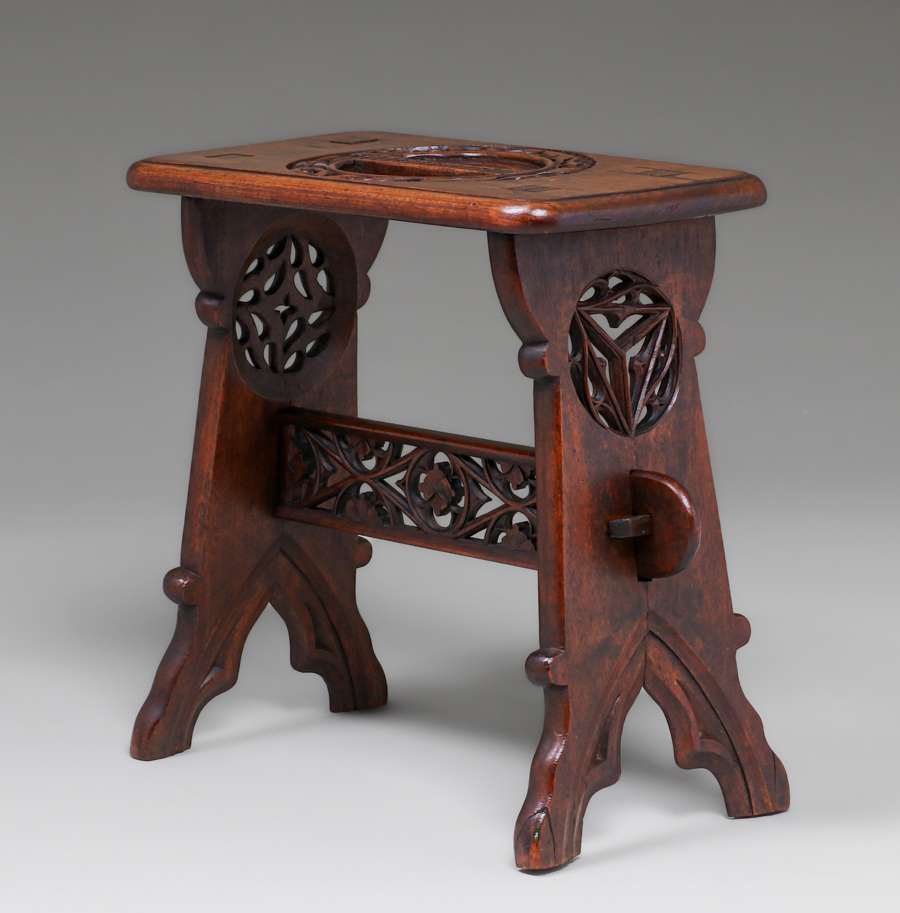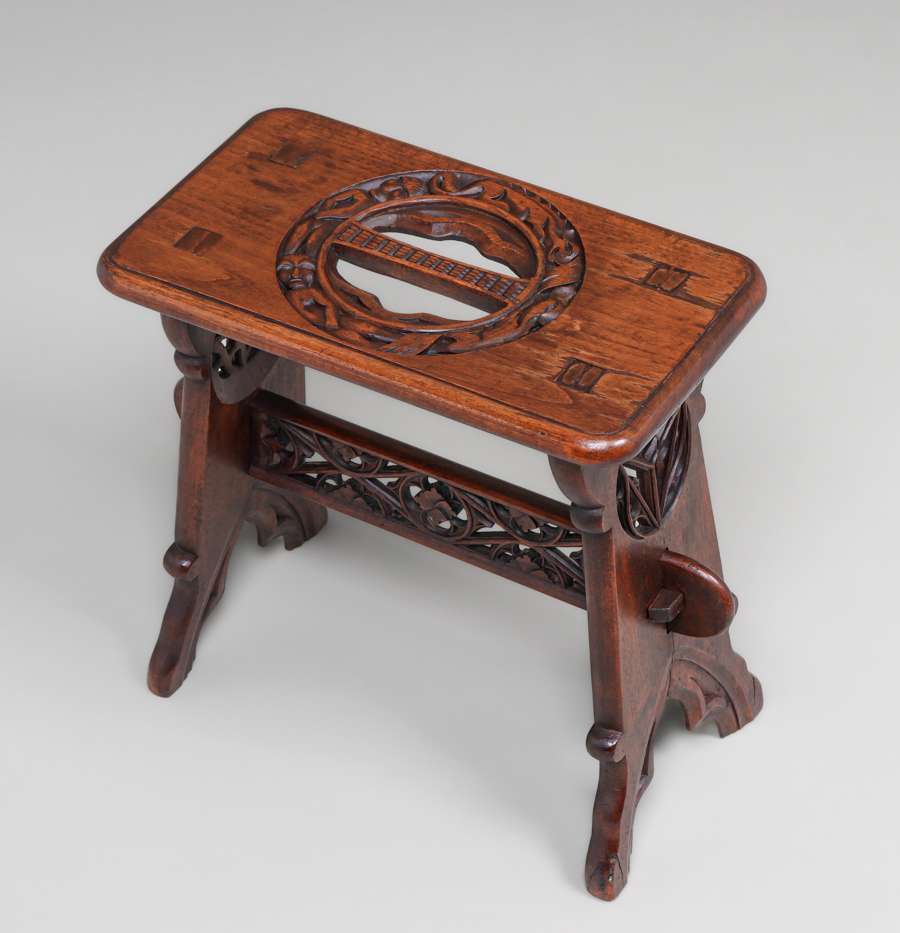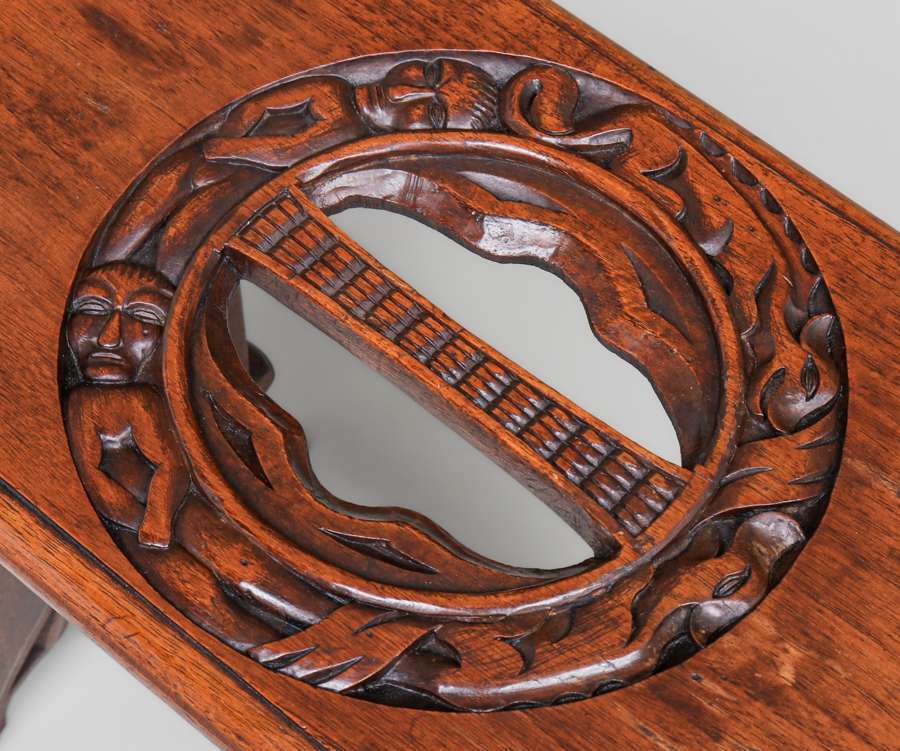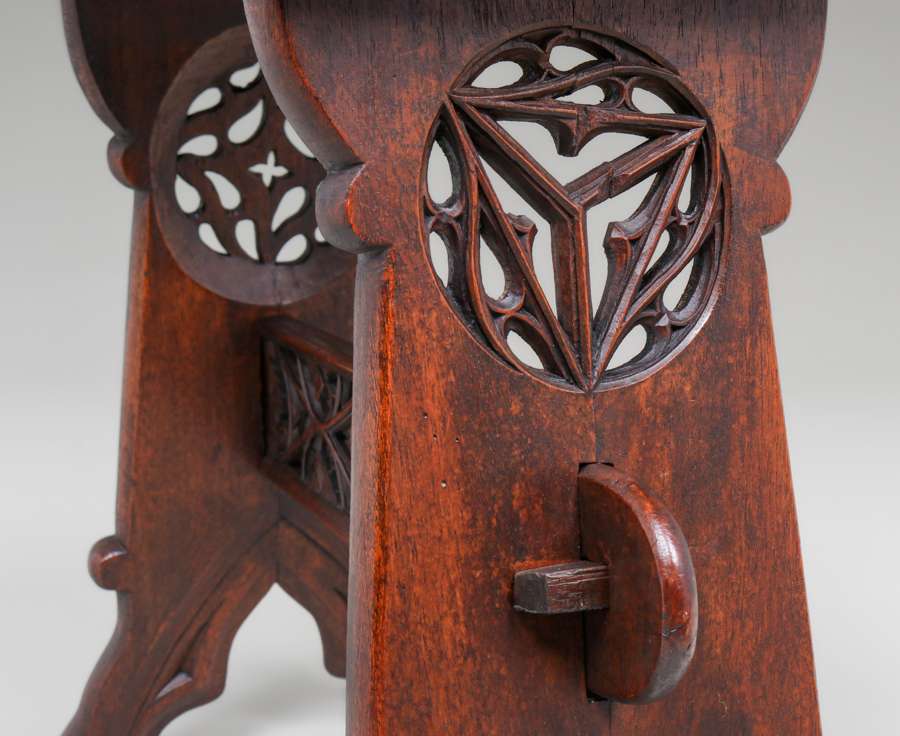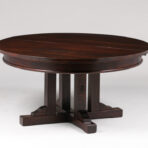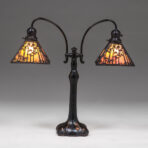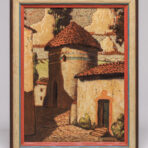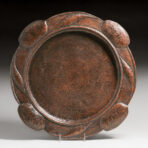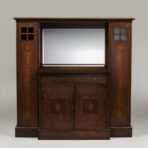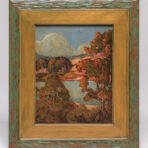14139. Tryon Toymakers – Biltmore Studios Hand Carved Walnut Gothic Bench c1930s. Unsigned. Excellent original finish. 17”w x 17”h x 10”d SOLD
Between 1901 and 1915 Eleanor Park Vance (1869 – 1954) lived in Biltmore Village at Asheville, North Carolina. Trained in Cincinnati’s art academy under famed instructors in the medium, and later in England, Vance was both an accomplished designer in the wood medium and skilled practitioner in this art. She began the Biltmore Estate Industries where she nurtured a workshop of trained young people who produced the most sophisticated and finest-crafted American wood products of the time. These objects were mostly accessories such as bowls, bookends, bellows, and hearth brushes as well as small furnishings such as the “Gothic” stool, modeled after examples still in the collection of Biltmore Estate. The marks on the earliest wood objects were “Forward” and later “Biltmore Estate Industries.”After the untimely death of Biltmore Estate owner G.W. Vanderbilt in 1914, Vance and her partner Charlotte L. Yale relocated to Tryon, North Carolina. The fine wood carving continued at Biltmore but Vanderbilt’s widow decided to sell the Estate Industries to Fred Seely of Asheville. He moved the business to his Grove Park location and renamed it “Biltmore Industries.” This new mark was used on their wood products and Seely ran the wood shop as an adjunct to his rapidly-growing homespun fabric business. Because Vance and Yale did not choose to compete with Seely, they did not produce in Tryon the fine carved products until around 1922 Seely decided to give the designs and woodcarving enterprise back to Vance and Yale — with an agreement that Tryon would supply carved products marked for the Biltmore Industries to order for Seely. Thus after 1922 identical carved products were made in Tryon marked “Tryon Toy-Makers and Wood-Carvers” or “Biltmore Industries.” Many of these designs were the same as earlier produced at Biltmore Estate Industries, while Vance also updated designs or came up with completely new products while in Tryon.Because Vance did not copyright her designs, a number of her carving pupils executed the same or similar objects for their own purposes. Some of them did so for their personal use and as gifts, and others produced carved products for commercial sale. Unless the piece is marked “Tryon Toy-Makers and Wood-Carvers” (usually on the bottom, burnt in) one cannot be certain the piece was made at Tryon. During Vance’s active years through the 1940s, there were also objects produced by “apprentice” youth marked “Tryon Craft School.” These generally are somewhat less refined in execution, but equally as charming and important to the heritage of artcraft in the Western North Carolina mountains. In 1949 Vance and Yale sold their business to H. Moss Guilbert, who changed the business name to Tryon Toymakers [one word] and dropped the “Wood-Carving” part of the name, as well as the production of finely-carved articles.During the period of the late 1920s through the 1940s, the most important and skilled of all the carvers working at Tryon was Pauline Miller, a native of Polk County, N.C. Besides her work carving the well-known accessories-type products, Miss Miller excelled at the special commissions taken on by Vance to produce one-off designs of ecclesiastic furnishings, architectural elements and other special assignments such as ornate doors and mantelpieces. These commissions usually are not marked, and are properly attributed to the Tryon Toy-Makers atelier by their documented provenance. The daughter of Pauline Miller Cowan donated her mother’s records and many of the original papers to Special Collections in Ramsey Library, University of North Carolina at Asheville. That institution has preserved these important documents for posterity, properly catalogued them, and have digitized these historical records to assist scholars and collectors.

